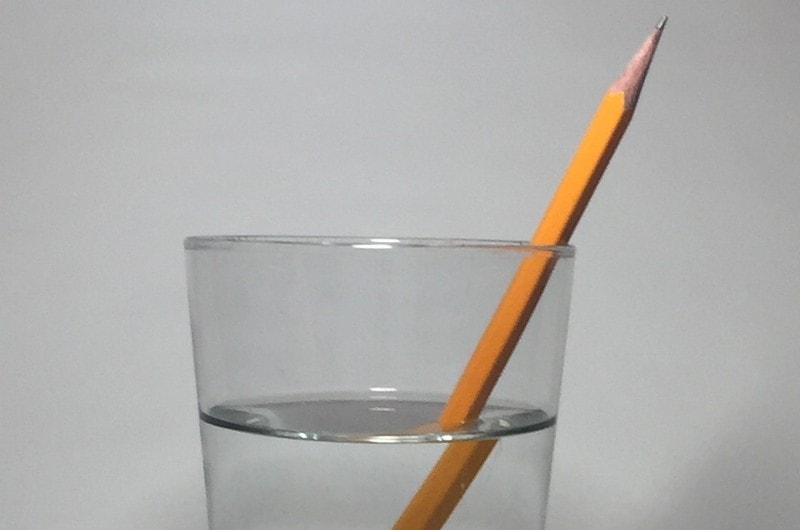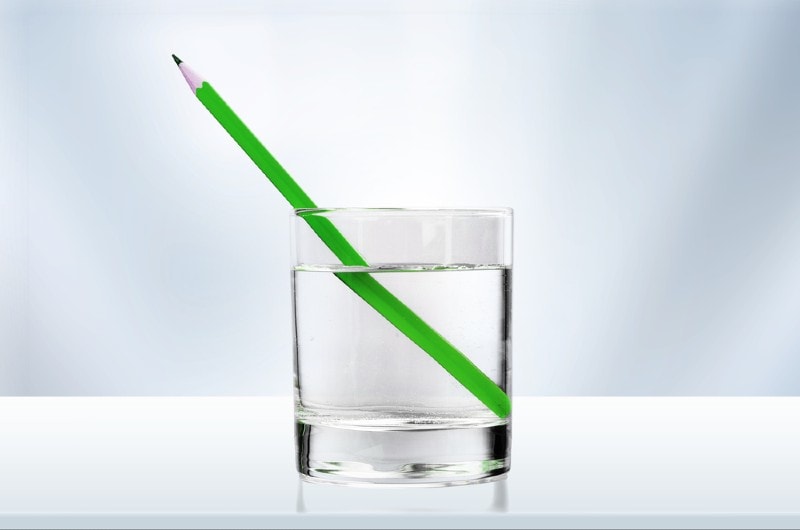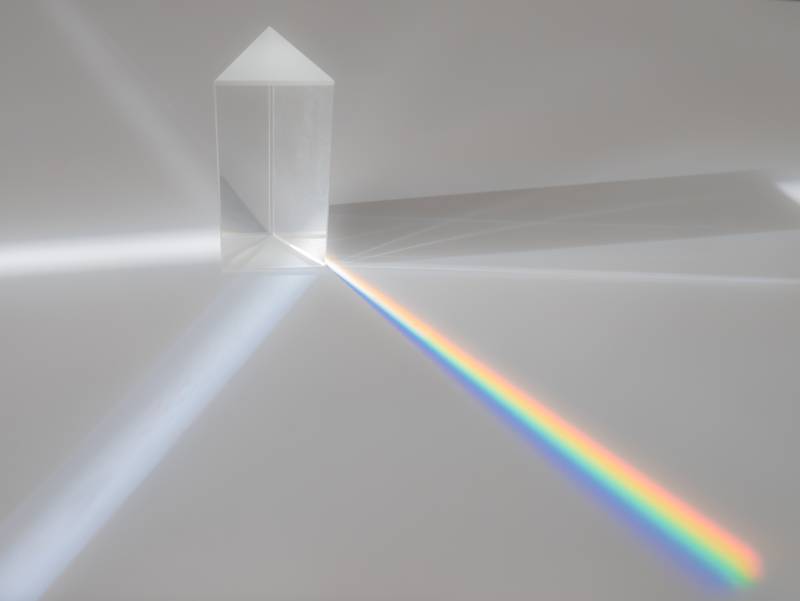What Is the Refractive Index of Glass? (Full Breakdown!)
Last Updated on

Light is an interesting phenomenon, affecting the world around us in many ways. Light also acts in certain ways when it encounters other objects. For example, when light hits an object’s surface and bounces off that surface, it is said to be reflected. While most people know about reflection, much fewer know about or understand refraction. This phenomenon is when light hits a surface and, instead of being reflected, part of the light goes into the object.
Some refer to the light as being “bent” when this happens. Glass is one object that refracts light, and the way it refracts with glass is called the refractive index. If you’d like to know more about the refractive index of glass, its advantages, where it’s used, and more, read on! We have the answers and information you seek below!
The short answer is that the refractive index varies depending on the type of glass. Crown glass, used in optical instruments, has an RI of 1.52, and flint glass has an RI of about 1.6. Acrylic glass has an RI of 1.49. 
How Does It Work?

Light, like sound, travels in all directions. When light moves from one medium, usually air, into another, like glass, it is sometimes bent or refracted. If you’ve ever seen a rainbow or looked into a prism, you’ve seen refracted light.
Refraction occurs along certain angles, also. For example, an object with a high refractive index (RI) will have a smaller angle, while one with a lower refractive index will have a larger angle. Rainbows have a low RI and thus look huge.
When it comes to glass, the RI can vary significantly. For example, the crown glass used in many optical instruments has a low RI of 1.52, while acrylic glass has an RI of 1.49. Flint glass, also used in optical instruments, has a RI of about 1.6. Interestingly, light’s velocity (speed) decreases when it passes through the glass and other objects.
The more the speed is decreased, the higher the RI. At the molecular level, this decrease in speed is caused by the interaction of the electrons on the glass with the photons in the light. That’s why light moves fastest in a vacuum because no electrons can get in its way and slow it down.
To find the refractive index of glass, you need to determine the ratio between the speed of light in a vacuum (its highest speed) and how much it slows when traveling through a specific type of glass. The following formula is used to determine the refractive index of whichever kind of glass is being used.
Another much easier-to-understand explanation of the refractive index is to take a clear glass filled with water. If you look at the glass while it sits on your kitchen table, the glass and water look transparent. However, if you put the glass in front of your face and try to look through it, objects on the other side will look distorted and fuzzy.
That, in a nutshell, is light being refracted through the glass and the water. The light is being slowed down due to the electrons in the glass and water, and the image on the other side looks different because of the refraction.
The refractive index is one of the most important properties of optical glass, like that used in a camera, telescope, or binoculars. It’s also a fundamental characteristic of showing how light interacts with the glass.

What Are the Types of Refractive Glass?
This question is slightly misleading because all glass is refractive. A better question would be, “What are the types of optical glass?” since, here at Optics Mag, we’re interested in optics for instruments like cameras, telescopes, and so forth. The two most common types of optical glass are crown glass and flint glass.
The former type of glass uses more potassium oxide in its formula, while the latter uses more lead. These materials affect the refractive index, as do other additives like fluorite, zinc oxide, barium oxide, and several others. The choice of crown or flint glass depends on the application (product) where you will use them. Crown glass is more often used in camera lenses, while flint glass is more widely used in telescopes.

Where Is Optical Glass Used?
Optical glass, including flint and crown glass, is used in various applications and products, some of which you’ve probably used at one time or another. One of the most common uses for optical glass is the traditional SLR camera, which uses optical glass lenses to deliver stunning photographs. SLR stands for Single Reflex Lens. Newer digital cameras add a “D” for digital, but the lens stays the same.
You will also find optical glass in eyeglasses, telescopes, binoculars, and other devices that you can use to see things far away or look up at the stars in the night sky. Lasers use optical glass to concentrate their beams, which is found in medical equipment. They include precision instruments like ophthalmoscopes, otoscopes, retinoscopes, and laryngoscopes. Lead radiation glass is a type of optical glass that shields radiologists when they take X-rays.
Advantages of Optical Glass
Optical glass delivers several advantages over traditional glass used in windows and car windshields; they use flat or float glass. The optical glass in telescopes allows us to see things far away more closely and clearly. In DSLR cameras, optical glass produces stunning images in incredibly high resolution.
The optical glass used in X-ray machines protects medical technicians from damaging effects. Surgeons in an operating room depend on optical glass to see minute details when performing surgery. Then, of course, there is the optical glass in eyeglasses, which millions depend on to see. In short, while all glass is refractive, optical glass refracts the light very precisely.

Disadvantages of Optical Glass
The disadvantages of optical glass refer mainly to the cost, time, and energy needed to produce it and less to any actual disadvantages it causes. Optical glass is extremely high-quality glass because it is used in precision instruments. The exact properties, especially the refractive index, must be known ahead of time and then created during the formulation process.
For example, the Hubble Space Telescope was one of the biggest and most expensive mistakes ever made with optical glass. The primary mirror of the telescope, which highly trained technicians made from optical glass, had a minor flaw. However, because of the massive size of the mirror and its application (seeing objects in deep space), that small flaw became a huge and expensive problem to fix.
It also takes a great deal of energy to produce optical glass, making it quite expensive. In some cases, like the Hubble, much of the work must be done by skilled craftspeople. That increases the cost of optical glass even more.

Frequently Asked Questions (FAQs)
Q: What is the difference between refractive index and index of refraction?
A: There is no difference. Both terms mean the same thing: how light is bent as it passes through an object like glass, air, water, etc.
Q: What law is used to measure the refractive index of an object?
A: Snell’s Law, aka the law of refraction. It was developed by the Dutch mathematician and astronomer Willebrord Snellius.
Q: What is the specific definition of the refractive index?
A: The refractive index is defined as the ratio of the speed of light in a vacuum compared to its speed when passing through another medium.
Q: What causes stars to “twinkle” in the night sky?
A: The twinkling we see is caused by the refraction of their light as it passes through Earth’s atmosphere.
Q: What is a good example of light refraction through glass?
A: A perfect example of light refraction through glass is when light passes through a prism and is split into its seven basic color components. They include red, orange, yellow, green, blue, indigo, and violet.
Q: What everyday objects use optical glass for its refractive properties?
A: DSLR cameras, telescopes, microscopes, eyeglasses, and binoculars.
Q: What causes light to refract when it passes through glass?
A: Light refracts due to the interaction of its photons of the light with the electrons in the glass. The electrons slow the photons down and distort the light. In effect, the light is bent at an angle, which is determined by the glass’s refractive index (RI).
Q: Can refracted light cause an optical illusion?
A: Yes, it can. Refracted light in the desert as it travels through heated air can cause a mirage.

A Quick Reference Guide to the Refractive Indexes of Different Glasses
| Medium | Refractive Index |
| Crown Glass | RI = 1.52 |
| Flint Glass | RI = 1.63 |
| Acrylic Glass | RI = 1.49 |
| Float Glass | RI = 1.51 |
| Water | RI = 1.33 |

Summing Up
The refractive index of glass is one of the properties that make glass such an incredible object. The optical glass refracts light in ways that make it suitable for many unique applications, especially cameras and telescopes. By bending the light, glass causes an object to gain new and amazing properties, allowing us to see into the heavens or take gorgeous photographs of a bird in flight. Different glasses refract light differently, although the change from one to another is often so slight as to be invisible to the naked eye. No matter the use, the refractive properties of glass allow it to be used in many amazing ways.
We hope today’s look at the refractive index of glass provided the information and explanation you were seeking. It’s a fascinating subject; we think you’ll agree. After reading today’s article, you’ll never look at a piece of glass the same way again.
See also:
- What Is the Refractive Index of Water? Everything You Need to Know!
- What Is the Refractive Index of Air? Everything You Need to Know!
Featured Image Credit By: ScienceGiant, Pixabay
About the Author Greg Iacono
Greg Iacono is a self-taught writer and former chiropractor who, ironically, retired early due to back problems. He now spends his time writing scintillating content on a wide variety of subjects. Greg is also a well-known video script writer known for his ability to take a complex subject and make it accessible for the layperson.
Related Articles:
What Is the Best Binocular Magnification for Hunting? Optical Features Explained
How to Clean a Refractor Telescope: Step-by-Step Guide
How to Clean a Telescope Eyepiece: Step-by-Step Guide
How to Clean a Rifle Scope: 8 Expert Tips
Monocular vs Telescope: Differences Explained (With Pictures)
What Is a Monocular Used For? 8 Common Functions
How to Clean a Telescope Mirror: 8 Expert Tips
Brightfield vs Phase Contrast Microscopy: The Differences Explained
